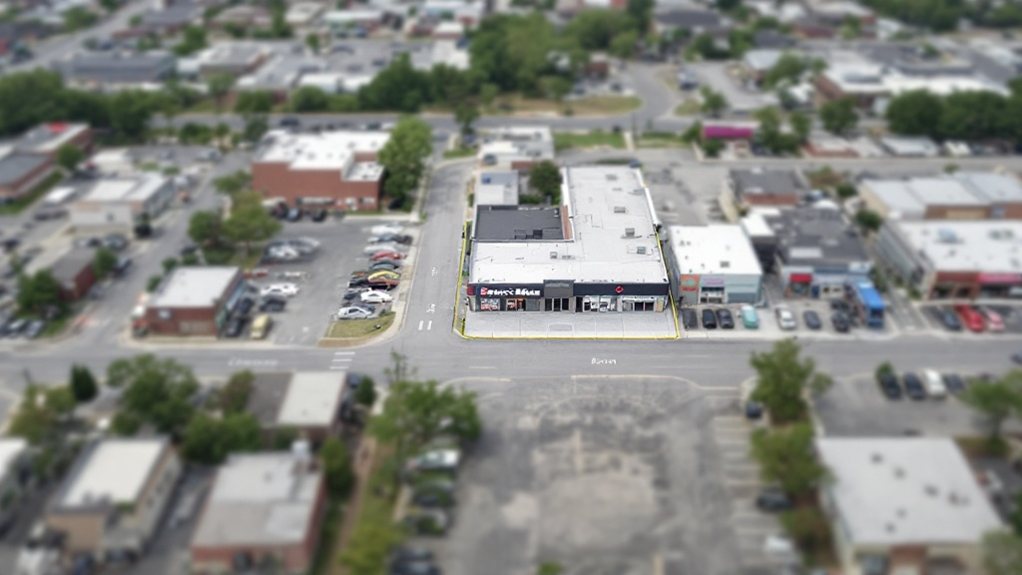To avoid thin content on your service area pages, recognize common issues like low word count, lack of depth, and duplicate information. Use tools like Google Search Console to identify problem areas, then enhance pages with location-specific details, multimedia, and content tailored to user intent. Prioritize high-performing pages and optimize their structure to improve visibility and engagement. By taking these steps, you can build comprehensive, valuable service area pages that satisfy both users and search engines. Explore further to dive into a robust service area content strategy.
Identify Thin Service Area Pages

When identifying thin service area pages, it's essential to recognize the common forms of thin content that can plague these pages. Look out for low word count, duplicate information, lack of depth, outdated content, and scraped or syndicated material. Thin content can negatively impact a website's search engine rankings and user experience. Traffic analysis, user engagement metrics, Google Search Console data, and content checks can all help pinpoint pages with thin content. Tools like Google Search Console, Screaming Frog, and SEO writing assistants can aid in this evaluation process. By identifying these issues, you can then take steps to enhance the content depth, authority, freshness, and originality on your service area pages.
Audit Service Area Page Content

To improve your service area pages, start by identifying your core services. Then, enhance those pages with specific local details, customer testimonials, and relevant data to engage users. By showcasing jobs done rather than just jobs wanted, ensure you consistently maintain and update this content over time.
Identify Core Services
Ensuring your service area pages effectively showcase your core offerings is a crucial step in avoiding thin content. Define your business offerings clearly, outlining the specific services provided in each location. Use bullet points or concise descriptions to highlight your key capabilities. Incorporate location-specific details that demonstrate your expertise and relevance in the community. Leverage customer testimonials from within the service area to build trust and credibility. Remember to optimize with relevant geographic keywords to improve local SEO. By clearly articulating your core services and tailoring the content to each service area, you can create robust and engaging pages that resonate with your target audience. Identifying the right service-area pages for a business without physical locations is key to avoid being considered a doorway page by Google.
Enhance With Specifics
Conducting a thorough content audit is crucial to identifying and addressing thin content on your service area pages. Use tools like SEMrush to analyze performance metrics and review content depth to ensure it meets user intent. Prioritize high-impact areas for improvement, focusing first on high-traffic or conversion-critical pages.
To enhance your content, consider these steps:
- Personalize each page with local nuances and details, using nearby landmarks to establish relevance.
- Incorporate geographical and demographic insights, such as nearby neighborhoods, major roads, and seasonal services tailored to local conditions.
- Integrate multimedia elements like images, videos, and Google Maps to make your pages more engaging and informative.
- Emphasize the local relevance of your service area pages to establish your business's expertise in the target market.
Prioritize High-Impact Service Area Pages

Identify your highest-traffic service pages and analyze their conversion metrics. Focus your content enhancement efforts on those high-impact pages to maximize business value. Doing so will help you avoid thin content and ensure your service area pages are effectively driving customer inquiries. Prioritize the service pages that generate the most leads and revenue for your business.
Identify High-Traffic Service Pages
To determine which of your service area pages receive the most traffic, you can leverage a variety of analytical tools and metrics. Examine your page traffic data in Google Analytics to identify the highest-performing pages. Additionally, monitor search volume metrics to pinpoint keywords that drive significant traffic. Analyze user intent to gauge the relevance of your content. Finally, assess user engagement, such as time spent on page, to further evaluate the performance of your service area pages.
- Analyze page traffic data to identify high-performing service area pages.
- Monitor search volume metrics to uncover keywords driving substantial traffic.
- Evaluate user engagement to determine the relevance of your service area content.
Analyze Conversion Metrics
Why not analyze your conversion metrics to prioritize high-impact service area pages? The average SEO conversion rate is 2.4%, but service area pages often perform lower. Location landing pages typically convert at 1.1%, indicating a need for optimization. High-impact pages, however, are more likely to convert due to their localized content and relevance. Businesses should invest in improving and building new service area pages to enhance user engagement. Incorporate cost data and city statistics to further optimize these pages. Advanced analytics can help identify which service area pages to prioritize based on conversion metrics. Optimizing these high-impact pages with detailed information and multimedia can improve dwell time and boost conversions.
Focus Enhancement Efforts
Prioritizing high-impact service area pages is crucial for enhancing your content strategy. By focusing on developing location-specific, high-quality content, you can establish trust, improve usability, and boost credibility with your local audience. Conduct regular audits to maintain a content strategy that proactively addresses issues and avoids thin content. Consider these three key strategies:
- Tailor your service descriptions to regional needs, incorporate local testimonials, and highlight relevant geographic landmarks to connect with your community.
- Implement high-volume keywords, optimize page titles and meta descriptions, and ensure mobile-friendliness to enhance search visibility.
- Prioritize content quality over quantity, expand on existing content, and conduct regular audits to maintain relevance and avoid thin content issues.
Enhance Service Area Page Depth
Optimizing the depth of your service area pages is crucial for enhancing user navigation and search engine visibility. Analyze your current page structure to identify deeply buried pages that may be inaccessible. Implement intuitive linking and navigation to reduce clicks to critical pages. Create direct paths to important service areas, focusing on user experience. Align page depth improvements with your SEO strategy to boost visibility. Monitor page depth as part of your ongoing SEO efforts to maintain optimal site structure. Avoid duplicate content and optimize for location-specific keywords. Enhance content depth, address search intent, and regularly update to maintain relevance. Leverage local SEO tactics, such as customizing meta tags and highlighting employee-area connections, to build trust and credibility.
Incorporate Relevant Multimedia
Enhancing your service area pages with relevant multimedia can significantly enrich the user experience and support your overall content strategy. Leverage visuals like images, infographics, and videos to capture attention and improve comprehension. For instance, you can:
- Showcase your service area with interactive maps and screenshots.
- Build trust through customer testimonial videos and before-and-after photos.
- Engage users with quizzes and 360-degree views of your service-related environments.
- Demonstrate your expertise and authority in the local market through educational videos or webinars.
Optimize Service Area Page Structure
To optimize your service area pages, you'll want to thoughtfully integrate location-specific details that resonate with your local audience. Incorporate nearby landmarks, tailor service descriptions to match regional needs, and embed maps to visually represent your coverage area. Highlight local partnerships and display customer testimonials specific to each location. Ensure your URLs include both service and location elements, and maintain an XML sitemap. Implement schema markup to specify your service areas and business details. By focusing on local relevance and technical optimization, you can avoid thin content and improve the performance of your service area pages.
Align Content With User Intent
Aligning your service area page content with user intent is key to driving meaningful engagement. Whether your users have informational, navigational, or transactional needs, tailoring your content to their specific goals will ensure they find the value they seek.
To align your content with user intent, consider these three strategies:
- Identify user pain points and questions, then create content that directly addresses them.
- Provide practical, actionable advice that users can implement immediately.
- Leverage diverse content formats, from in-depth guides to visually engaging videos, to cater to different learning preferences.
Leverage Internal Linking for Service Area Pages
Optimizing your internal navigation can significantly boost user experience and search engine visibility. By aligning your content into cohesive topic clusters, you'll create a more intuitive site structure that enhances the authority of your service area pages. Leveraging strategic internal links will guide your users to the most relevant information, ultimately improving conversions and overall site performance.
Optimize Internal Navigation
Effectively leveraging internal linking can significantly enhance the visibility and user experience of your service area pages. Implement a clear link hierarchy by:
- Positioning service area pages with logical links to parent or category pages, establishing a pyramid structure that enhances search engine understanding.
- Identifying key service area pages and linking them strategically to distribute authority and boost overall visibility.
- Providing users with a clear path to explore related content by including links to complementary services or detailed sub-services, improving engagement and reducing bounce rates.
Avoid common mistakes like ignoring link hierarchy, deeply nesting pages, and failing to update links to new content. Optimizing your internal navigation is crucial for driving traffic and conversions.
Enhance Cluster Cohesion
When it comes to enhancing the cohesion of your service area content clusters, strategically leveraging internal linking is key. By creating thematic content silos and connecting them through well-placed links, you can guide users seamlessly through your site's offerings. Incorporate descriptive anchor text, mix link types, and maintain a balanced approach to avoid link overload. Utilize pillar pages to introduce broader topics, then link to more specific service area pages. Optimize images as clickable links to enhance the user experience. Remember, internal linking not only improves crawlability and passes authority but also keeps visitors engaged and interested in your comprehensive service area content.
Monitor and Iterate Service Area Page Performance
Regularly monitoring the performance of your service area pages is crucial for identifying areas that require improvement. By utilizing analytics tools like Google Analytics, you can track key metrics such as organic traffic, engagement, and device usage to better understand how users interact with your content.
To optimize your service area pages, consider these steps:
- Regularly review bounce rates, conversion rates, and other KPIs to pinpoint opportunities for enhancement.
- Analyze traffic patterns to understand user navigation and identify high-performing content.
- Evaluate device metrics to ensure your pages are mobile-friendly and provide an optimal experience across all platforms.
Continuously refining your service area pages based on data-driven insights will help you avoid thin content and deliver valuable information to your target audience.
Maintain a Robust Service Area Content Strategy
Maintaining a robust service area content strategy is crucial for avoiding thin content and delivering value to your target audience. Begin by conducting thorough research to ensure your content offers unique insights backed by credible sources. Prioritize quality over quantity, and enhance pages with multimedia elements to increase engagement. Craft content that addresses specific user needs and questions, and maintain readability for accessibility. Target location-specific keywords, use internal linking, and optimize meta tags to improve local search visibility. Incorporate unique case studies, city-specific statistics, and customer testimonials to build trust and credibility. Regularly audit and update your content, collaborating with experts to expand its depth and value. By following these practices, you can develop a comprehensive content strategy that sets you apart from the competition.
